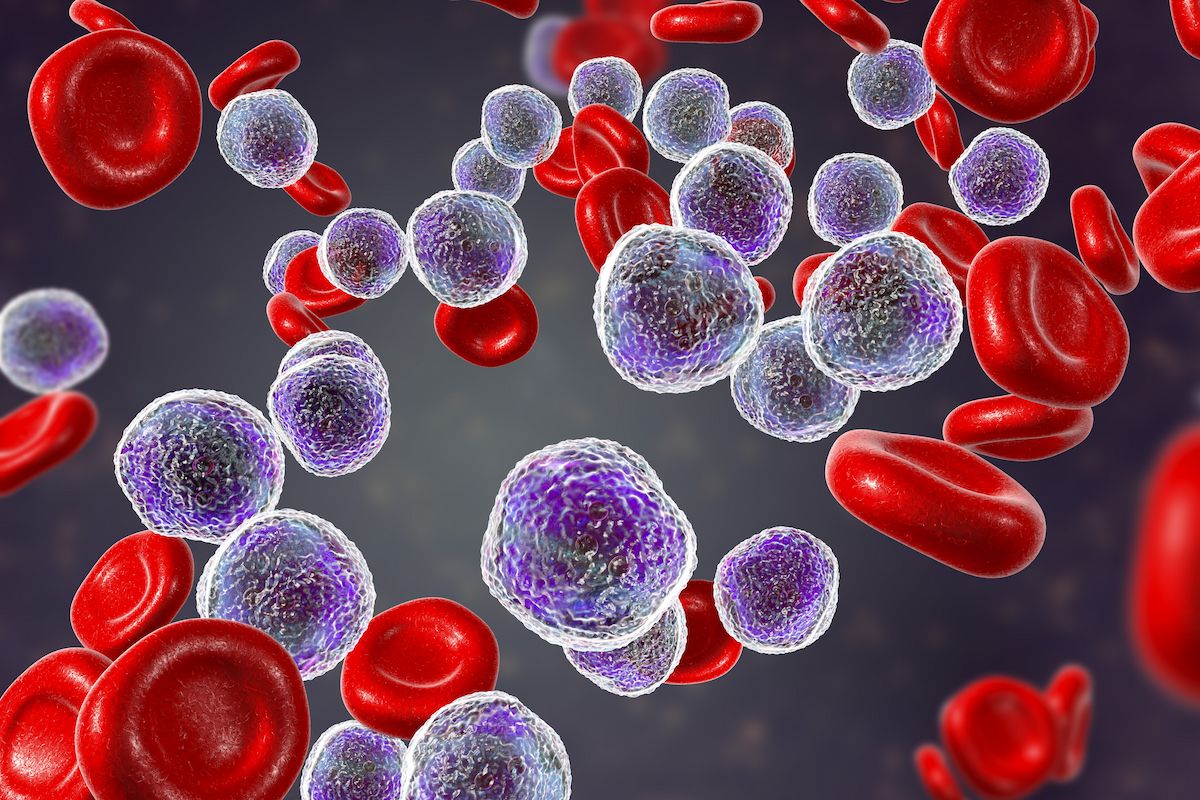Tambiciclib/Zanubrutinib Yields Promising Responses in R/R DLBCL
Tambiciclib plus zanubrutinib doubled the expected ORR of zanubrutinib monotherapy, eliciting an ORR of 67% in patients with relapsed or refractory DLBCL.
Tambiciclib plus zanubrutinib doubled the expected ORR of zanubrutinib monotherapy, eliciting an ORR of 67% in patients with relapsed or refractory DLBCL.

Tambiciclib (SLS009), a highly selective CDK9 inhibitor, in combination with the BTK inhibitor zanubrutinib (Brukinsa) achieved positive efficacy and safety results in a phase 2a trial (NCT06375733) for the treatment of a small cohort of patients with relapsed or refractory diffuse large B-cell lymphoma (DLBCL), according to a press release from the developer, SELLAS Life Sciences Group, Inc.1
The combination therapy elicited an overall response rate (ORR) of 67%, which was over double what zanubrutinib monotherapy is expected to achieve. One patient achieved a complete response (CR), and 3 achieved partial responses; target lesion shrinkages were 89%, 78%, and 56%.
Of patients with the activated B-cell like subtype (n = 6), the disease control rate was 83%, 4 achieved an objective response, and 1 achieved stable disease.
As of the last follow-up, with a median of 4.6 months (range, 1.4-7.4), median overall survival was not yet reached, although 6 of 9 patients were still alive.
“These results represent a promising step forward in improving outcomes for [patients with] DLBCL and underscores the potential of [tambiciclib] in combination with zanubrutinib to deliver meaningful clinical benefits,” Angelos Stergiou, MD, ScD hc, president and chief executive officer at SELLAS, stated in the release.1 “Achieving an ORR that significantly exceeds expectations, along with a [CR] and multiple [PRs], is a testament to the power of collaboration and innovation in tackling this challenging disease. We believe that the combination of SLS009 and zanubrutinib demonstrates a synergy that could pave the way for more effective treatment options.”
A total of 9 patients with DLBCL were enrolled in the trial; 3 had the germinal center B-cell like subtype, and 6 had the activated B-cell like subtype. Genetic data from 6 patients revealed that none carried the MYD88 or CD79B mutations that are predictive of enhanced response to BTK inhibitors; the 1 patient who achieved CR had MYC amplification as well as TP53 mutations.
Eligible patients were 18 years or older with DLBCL that was relapsed or refractory after 2 to 4 prior systemic treatment regimes.2 Additional eligibility criteria included at least 1 measurable lesion, unsuitability for stem cell transplantation, an ECOG performance status from 0 to 2, and adequate organ function.
Having primary or secondary central nervous system lymphoma; receipt of chemotherapy, targeted therapy, endocrine therapy, immunotherapy, or Chinese medicine with anti-tumor effect and other investigational drugs or device therapy within 28 days or 5 half-lives prior to administration; primary resistance to CDK9 and BTK inhibitors; history of organ transplantation or allogenic stem cell transplantation; or other malignancies within 2 years prior to study entry were among reasons patients were excluded from trial participation.
Patients received tambiciclib as an intravenous infusion at 75 mg, 60 mg, or 100 mg once a week and oral zanubrutinib at 160 mg every other day during 28-day cycles until progression.
The primary trial end point of phase 2 was ORR assessed by investigator per 2014 Lugano standards.
At the last follow-up, of the 6 patients who were alive, 5 had non-germinal center B-cell like subtype and 1 had germinal center B-cell like subtype. Adverse events (AEs) of grade 3 or higher were reported in 55.6% of patients, which was comparable to anticipated outcomes of zanubrutinib monotherapy.
Dragan Cicic, MD, chief development officer at Sellas stated, “These additional data from yet another indication help us further expand the scope of [tambiciclib]…In parallel with our very advanced clinical development in acute myeloid leukemia, we are continuously working on additional clinical and preclinical programs in other indications and uncovering genetic biomarkers that make all the difference in today’s drug development.”1
Tambiciclib previously received fast track designation and rare pediatric disease designation in relapsed or refractory acute myeloid leukemia.3,4
References
- SELLAS announces positive data from phase 2a trial of SLS009 in combination with zanubrutinib in DLBCL. News release. SELLAS Life Sciences Group, Inc. February 20, 2025. Accessed February 21, 2025. https://tinyurl.com/ev8rndv2
- A study of GFH009 in combination with zanubrutinib in subjects with relapsed or refractory DLBCL. ClinicalTrials.gov. Updated December 13, 2024. Accessed February 21, 2025. https://tinyurl.com/vm2wtvv6
- SELLAS Life Sciences receives FDA fast track designation for SLS009 for treatment of relapsed/refractory acute myeloid leukemia and provides updated data for phase 2a study of SLS009 in relapsed/refractory acute myeloid leukemia patients. News release. SELLAS Life Sciences Group, Inc. January 9, 2024. Accessed February 21, 2025. https://bit.ly/48jO0QV
- SELLAS announces U.S. FDA rare pediatric disease designation (RPDD) granted to SLS009 for the treatment of pediatric acute myeloid leukemia. SELLAS Life Sciences Group, Inc. July 16, 2024. Accessed February 21, 2025. https://shorturl.at/tytSr
Newsletter
Stay up to date on recent advances in the multidisciplinary approach to cancer.
Highlighting Insights From the Marginal Zone Lymphoma Workshop
Clinicians outline the significance of the MZL Workshop, where a gathering of international experts in the field discussed updates in the disease state.
Expanding Horizons in T-Cell Lymphoma Therapy: Focus on Personalized Treatment Strategies
Several lymphoma experts discuss the current T-cell lymphoma landscape, the need for new therapies, and ongoing research in the space.